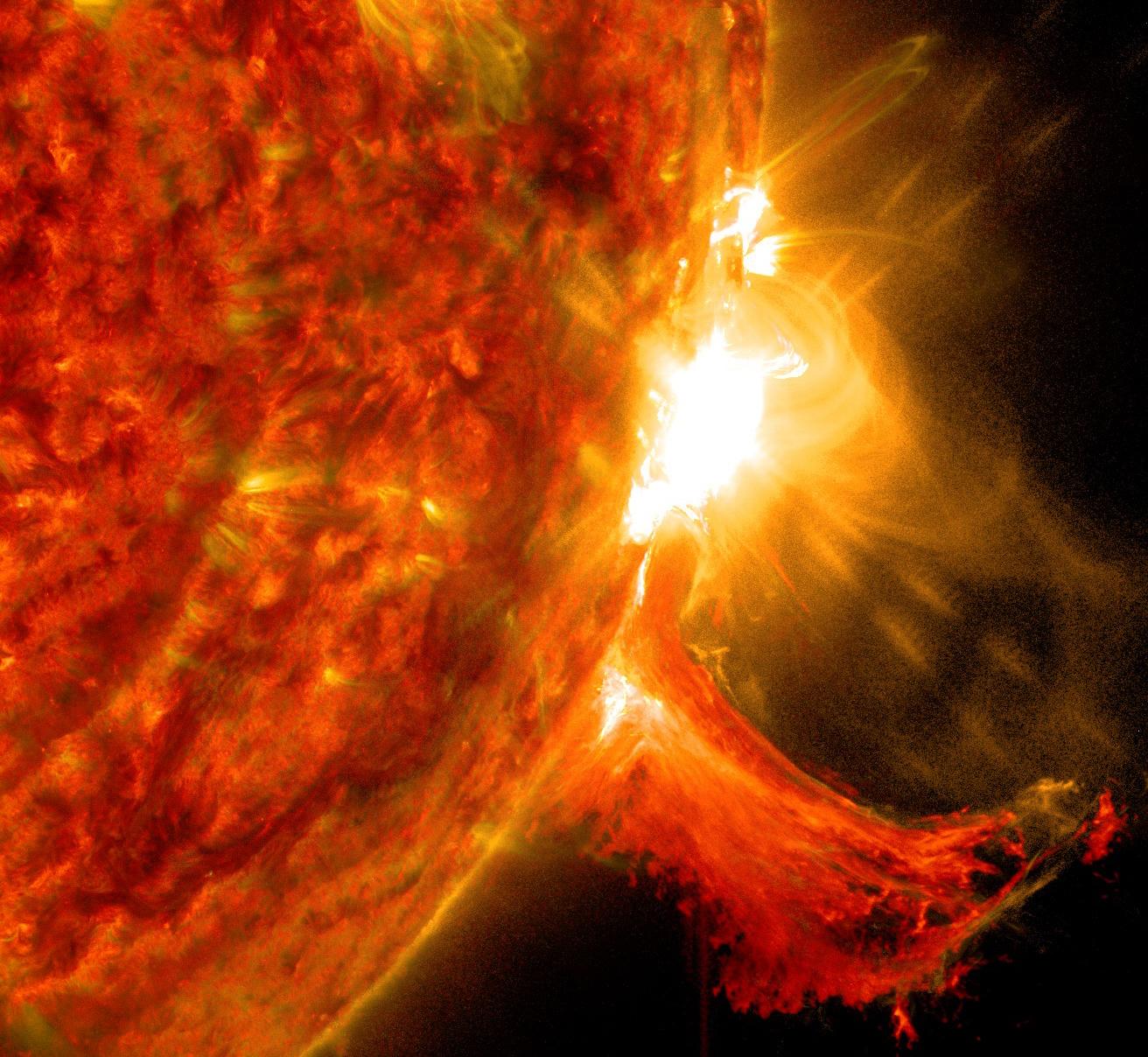Studying our nearest star
At a glance
- Despite being our relatively close neighbour, the Sun still holds many mysteries for astronomers
- The SKA telescopes will provide high angular resolution radio images of the Sun, allowing us to reveal unprecedented details of our nearest star
- They will address the problems of why the Sun’s corona is so much hotter than the surface, and how the heating mechanism works
- Radio observations of the Sun will also help us to better predict space weather, a very important field with direct impact on people's everyday life, as it can affect satellite communications and infrastructure here on Earth
The Sun is the main source of energy in our planetary system. Not only does it shine steadily as the source of visible light but it also has moments of burst-like activity which can have an impact here on Earth.
During these moments, huge explosions happen in the Sun’s atmosphere called solar flares and coronal mass ejections, the effects of which can be felt through the heliosphere, the bubble of solar plasma in which the Solar System exists.
Radio observations of the Sun carry a treasure trove of information about solar magnetic fields and coronal processes which cannot be gained by any other means. With the SKA telescopes such observations will be more detailed than previously possible.
Solar mysteries
One of the biggest puzzles in solar physics is how the corona, the Sun's outer atmosphere, is so much hotter than the surface - more than 300 times hotter in fact. This apparent violation of the principles of thermodynamics has been known since the early 1940s and is referred to as the coronal heating problem.
It is suspected that the source of heating might be related to the Sun’s magnetic fields, however their strength can vary by a factor of 1000 in different locations, whereas the corona is hot everywhere. That suggests that the source responsible for transporting this energy to the corona must be widespread and persistent, unlike large intermittent solar flares.
One theory supported by observations from the SKA precursor MWA, is that so-called "nanoflares", tiny flashes of radio light seen all over the Sun, could be responsible for the extreme heating of the corona.
Telescopes like the future SKA-Low in Western Australia or present-day pathfinders are uniquely placed to investigate this problem, as they can see the low-frequency radio emission from these very weak bursts.

Explosive energy
The corona occasionally sees violent bursts of activity such as solar flares or explosions called coronal mass ejections (CMEs), where the latter are usually associated with expulsions of large amounts of energetic plasma and accompanying magnetic fields.
These explosions are powered by the energy stored in the Sun’s magnetic fields, and unleash a range of dramatic phenomena that can be studied as intense emission spanning all the way from X-rays to low radio frequencies. CMEs can have an impact as far away as the Earth.
Space weather
Hot solar gas and fast particles radiate through the heliosphere, the bubble of plasma emanating from the Sun which separates our Solar System from interstellar space. When the solar ejections reach the Earth we refer to their effects as "space weather".
The effect of these ejections range from benign and beautiful phenomena like the northern and southern lights (aurora), to more serious ones like electrical blackouts, damage to satellites, or disruption to radio communications. For this reason, studying the Sun-Earth connection has become a key issue in space research and is of relevance more broadly.
The SKA telescopes will provide a unique tool for diagnosing various phenomena in the heliosphere. As radio observations provide the only known means to obtain quantitative estimates of coronal magnetic fields, the primary drivers of space weather, the SKA is also expected to make important contributions in this area.




